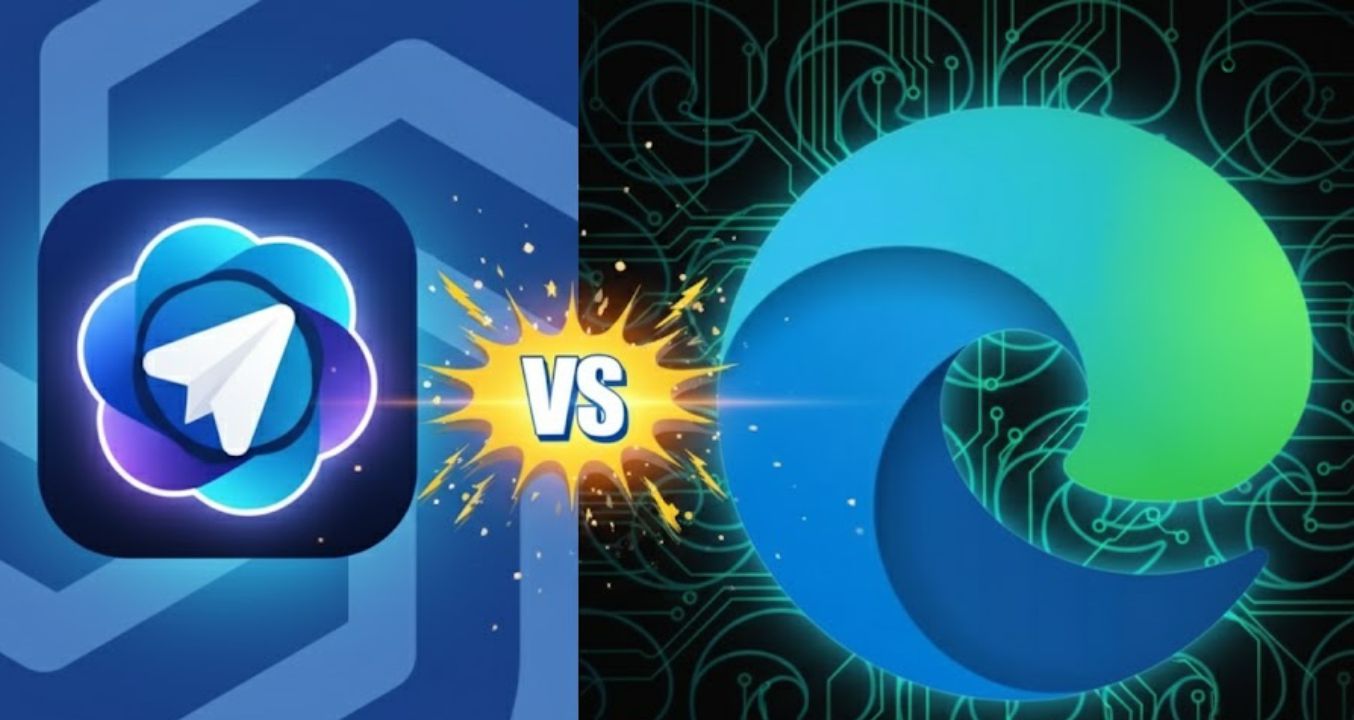Microsoft is redefining the future of web browsing by putting artificial intelligence (AI) at the core of its Edge browser. With the release of the new “Copilot Mode”, the tech giant has made its boldest move yet to compete directly with OpenAI’s ChatGPT Atlas, setting off what many are calling the next big AI browser war.
This update, officially launched in late 2025 after months of anticipation, marks a monumental shift in how users interact with their browsers. Microsoft’s Copilot isn’t just an add-on—it’s an intelligent assistant built directly into the browsing experience, designed to help you search smarter, shop better, and stay productive effortlessly.
Let’s explore everything about Microsoft Edge’s new Copilot Mode, how it stacks up against ChatGPT Atlas, and what it means for the future of AI-driven web experiences.
⚙️ What Is Copilot Mode in Microsoft Edge?
At its heart, Copilot Mode transforms Microsoft Edge into a fully interactive AI assistant. Instead of manually searching or switching between tabs, you can now simply talk to your browser.
Every new tab opens with a built-in chat window where users can:
- Ask questions or summarize web pages
- Get instant answers or creative ideas
- Perform searches conversationally
- Generate content like emails, outlines, or product comparisons
This hands-free, AI-driven browsing experience blends search, summarization, and chat into one seamless interface. No more juggling between ChatGPT, Bing, and browser tabs—Edge now handles it all in real time.
🌐 AI-Integrated Browsing: The Future of Web Interaction
What makes Copilot Mode revolutionary is integration. Previously, users had to toggle between an AI assistant and browser tabs. Now, everything happens in one place.
For example:
- While reading multiple articles, you can ask Copilot to summarize them collectively.
- If you’re comparing products, Copilot can analyze open tabs and provide a comprehensive comparison without you doing any manual work.
This seamless multitasking feature turns Edge into an intelligent workspace rather than just a browsing tool—allowing AI to understand context across tabs and act as your digital assistant throughout your session.
🛍️ How Copilot Transforms Online Shopping and Research
One of the most impressive applications of Microsoft Edge’s AI is its use in shopping and research.
Imagine you have several product pages open—headphones, laptops, or smartphones. Instead of switching between them manually, Copilot can:
- Compare product specs and prices automatically
- Highlight key differences and customer reviews
- Recommend the best option based on your budget or priorities
Similarly, for students, researchers, and professionals, Copilot can summarize long articles, extract references, and create quick notes from multiple sources.
This multi-tab awareness makes Edge a powerful research companion—something ChatGPT Atlas is also targeting, but Microsoft’s direct browser integration gives it an early advantage.
🧠 The Rise of “Agentic Copilot Actions”
Microsoft isn’t stopping at simple text-based AI assistance. The company has also teased a futuristic feature called “Agentic Copilot Actions.”
These go beyond basic recommendations and allow the AI to take action on your behalf—from unsubscribing to unwanted marketing emails to booking restaurant reservations or managing your inbox automatically.
However, Microsoft admits these features are still in testing. Some users have reported minor inconsistencies, such as the AI confirming an action it hadn’t completed. Still, it showcases Microsoft’s long-term vision—a browser that doesn’t just assist but acts autonomously.
🔒 Privacy and Data Control in AI-Enhanced Browsing
One of the biggest user concerns with AI integration is data privacy—especially when your browsing history and personal habits come into play.
Microsoft addresses this by making Copilot’s deeper data access entirely opt-in. Users can choose whether to share their history, bookmarks, or browsing patterns.
If enabled, Copilot can offer personalized suggestions, smarter results, and contextual answers. If not, it functions independently of user data, keeping your privacy intact.
This approach provides transparency while still allowing customization—something that could make users more comfortable using AI-enhanced browsers.
🧭 Introducing “Journeys”: AI That Organizes Your Web Life
A standout new feature arriving alongside Copilot Mode is Journeys—a tool designed to organize your browsing history intelligently.
Instead of showing a long, confusing list of visited sites, Journeys automatically:
- Groups related pages under topics or themes (e.g., “Vacation Planning,” “AI Tools,” “Home Gadgets”)
- Shows you where you left off in your research
- Suggests next steps or related searches based on your behavior
For anyone who frequently researches, shops, or works across multiple sessions, Journeys is a game-changer. It means never having to dig through endless tabs or remember what you were looking for last week—the AI handles it all.
🚀 Why Microsoft’s AI Edge Strategy Matters
Microsoft’s strategy is clear: AI is no longer an optional feature—it’s the foundation of modern browsing.
This move signifies a fundamental shift: browsers are no longer static gateways to the web but dynamic, intelligent partners that adapt to your needs.
The company’s close partnership with OpenAI has already given it a head start, powering Copilot across Microsoft 365 apps, GitHub, and Azure. Now, integrating similar intelligence into Edge creates an ecosystem-wide experience.
This makes Edge not just a browser but part of Microsoft’s grander vision of an AI-powered digital environment.
⚔️ Microsoft Edge vs ChatGPT Atlas: The AI Browser Showdown
With OpenAI’s ChatGPT Atlas entering the market just days before this launch, it’s clear that the AI browser race is heating up.
Here’s a quick comparison between the two:
| Feature | Microsoft Edge Copilot | ChatGPT Atlas |
|---|---|---|
| Integration | Built into Edge browser | Standalone AI browser |
| AI Model | Powered by OpenAI GPT + Bing Search | OpenAI GPT + web-based tools |
| Personalization | Optional browsing history access | Cloud-based customization |
| Multitab Awareness | Yes – Can summarize multiple tabs | Limited (currently one-page context) |
| Privacy Control | Full user control | Cloud-stored preferences |
| Automation (Actions) | Agentic Copilot in preview | Task automation limited |
While both browsers showcase next-generation AI experiences, Microsoft’s deep OS and ecosystem integration gives it a strategic advantage—especially for users already in the Microsoft ecosystem.
🧩 Potential Challenges and Limitations
Despite its promise, Copilot Mode faces a few challenges:
- Accuracy & Reliability – AI models can misinterpret context or deliver outdated data.
- Privacy Concerns – Even with opt-in controls, users remain cautious about data collection.
- Performance Impact – Running live AI models inside browsers can affect speed on lower-end devices.
- Learning Curve – Traditional users might find conversational browsing unfamiliar.
Microsoft acknowledges these issues but continues refining Copilot’s architecture with frequent updates. The company has already launched feedback programs for beta testers to shape improvements over time.
🔮 The Future of AI-Powered Browsing
The introduction of Copilot Mode in Edge marks the beginning of a new era for web browsing—one where the browser doesn’t just follow your commands but anticipates your needs.
Imagine future updates where:
- Copilot integrates with Outlook, Teams, and OneDrive for seamless multitasking.
- AI curates personalized reading lists and ad-free summaries.
- Edge learns from your workflow to automate repetitive actions online.
Microsoft’s vision is clear: the browser becomes a personal digital companion. Whether users embrace this AI-first approach or prefer traditional browsing, the impact is undeniable.
🧭 How to Enable and Try Copilot Mode in Microsoft Edge
If you’re ready to experience AI-enhanced browsing, here’s how to get started:
- Update Edge to the latest version via Settings → About Microsoft Edge.
- Click the Copilot icon on the toolbar.
- Log in with your Microsoft account.
- Choose whether to enable personalized AI (optional).
- Start chatting, searching, and exploring—all within your browser tabs.
That’s it! You’re now using Microsoft Edge’s Copilot Mode—a completely new way to interact with the internet.
🏁 Conclusion: Microsoft Bets Big on AI’s Future
Microsoft’s Copilot Mode is more than just an update—it’s a declaration that AI is the future of browsing. By merging real-time intelligence with personalization, automation, and security, Edge positions itself as a true competitor to ChatGPT Atlas and other AI-driven browsers.
This evolution represents a shift from search engines to smart companions—a move that could reshape how billions of people navigate the web.
As Copilot continues to evolve, users can expect more seamless integration, smarter recommendations, and eventually, an entirely AI-powered browsing ecosystem. Whether you’re a researcher, shopper, or casual surfer, Microsoft Edge’s AI tools promise to make every click more intuitive and every session more productive.

